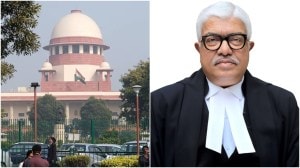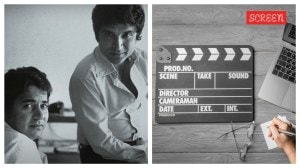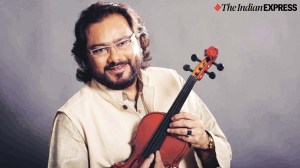Scenes from a tragedy
Since Atal Bihari Vajpayee has cited "national sentiment" as the reason to endorse the Ram Mandir in Ayodhya, it might be useful...

Since Atal Bihari Vajpayee has cited "national sentiment" as the reason to endorse the Ram Mandir in Ayodhya, it might be useful to find some empirical data to give greater credence to this approach.
May I send the prime minister a video cassette based on the most comprehensive coverage of events in Ayodhya soon after the Babri Masjid was demolished? In those days there were no so-called independent channels. The video Newstrack produced a week after the demolition in Ayodhya is, to my mind, a collector’s piece for anyone trying to assess popular sentiment on the Babri Masjid-Ram Janmabhoomi controversy.
Soon after the demolition, a group of a women is shown celebrating the event. They are seated in a circle, clapping and singing a song: “Ab yeh jhanda lahrayega saare Pakistan pe.”Where in this spontaneous, ecstatic performance is the great sentiment for the Ram temple? And how does Pakistan get into the bargain? Clearly these somewhat simple-minded women were involved in a victory celebration and Muslims and Pakistan become synonymous in their perception.
The next sequence in that video magazine shows hysterical young men, saffron bands tied around their heads, flourishing something resembling a lance or a spear. They too are saying,"Bomb girega Pakistan pe". The final word, of course, is Bal Thackeray’s: "If they wish to go to Pakistan, let them go." His is a blanket invitation for Indian Muslims, all 140 million of them, to cross over to Pakistan.
Where is the sentiment for Ram in all of this? In Akira Kurosawa’s masterpiece, Rashomon, the same reality is viewed from five different angles. It is conceivable that Newstrack offers just one perspective on Ayodhya but nevertheless a valid one. In none of the four sequences in the video magazine is there any mention of Ram or his Janambhoomi. The mood is not religious but hysterical and full of hate.
Moreover, what does one make of that repeated, continuous reference to Pakistan by all the dramatis personae in that magazine? Clearly a large section of the population has internalised a distorted reality which no political leadership (particularly the Congress) has had the courage or the imagination to correct since independence. A basic venom has settled in thepsyche of a section of the majority that Muslims partitioned the country and stayed on. In other words, there is a linkage in perpetuity between Indian Muslims and Pakistan. Therefore when the Babri Masjid is demolished the mood is to mock at both — Indian Muslims as well as Pakistan — the two, in that moment of hysteria, placed in one, common category.
That the Congress accepted the Partition with only Maulana Azad and Khan Abdul Ghaffar Khan protesting against it, is a reality Congressmen should have declared to cleanse the air of post partition hatred. But they did not because so many of their own hands were in the till.
By making the statement on the Ram temple, Vajpayee has set the terms on which the party could go to the polls. He has also called the whispered bluff of the NDA allies. If the NDA allies will not leave now when the PM has more or less endorsed temple construction in Ayodhya, what better moment are they waiting for? After the date for temple construction has been announced at the Kumbh mela in mid-January? After Mamata Bannerjee has presented the Railway budget in February?
Or have some of the allies made the assessment that Vajpayee has invested too much in his image as a mature statesman worldwide to risk that image floundering on a platform of questionable benefit to him and the party. Are they visualising some back tracking on the temple issue?
You can send the boy out of the shakha but not the shakha out of the boy. This is absolutely true of the PM. But equally true is the fact that he has evolved, travelled a long distance as a parliamentarian, and a statesman. Remember his statement as foreign minister of the Janata Government in 1977? "I am on the chair once occupied by Jawaharlal Nehru," he said with pride.
The Lahore bus journey, his speech at Minar-e-Pakistan: These are the images with which Vajpayee was identified in recent years. Are we to believe that speeches like the one at Staten Island and the Ram temple statement are only part of the orchestration to keep the Sangh cadres in line?
Some imams of local mosques told me: "Muslims defected en masse from the Congress after they were deceived by P.V. Narasimha Rao; they have been disappointed by Vajpayee shedding his secular mask." It would be naive to expect Muslim votes within the space of a year but the fact that they felt secure in Vajpayee’s image of a tolerant leader had a considerable potential in harmonising the country internally and India’s voice being heard with respect in the counsels of the world. Recent series of diplomatic successes owed a great deal to his image of being a secular leader.
You can send the boy out of the shakha but not the shakha out of the boy





- 01
- 02
- 03
- 04
- 05


























